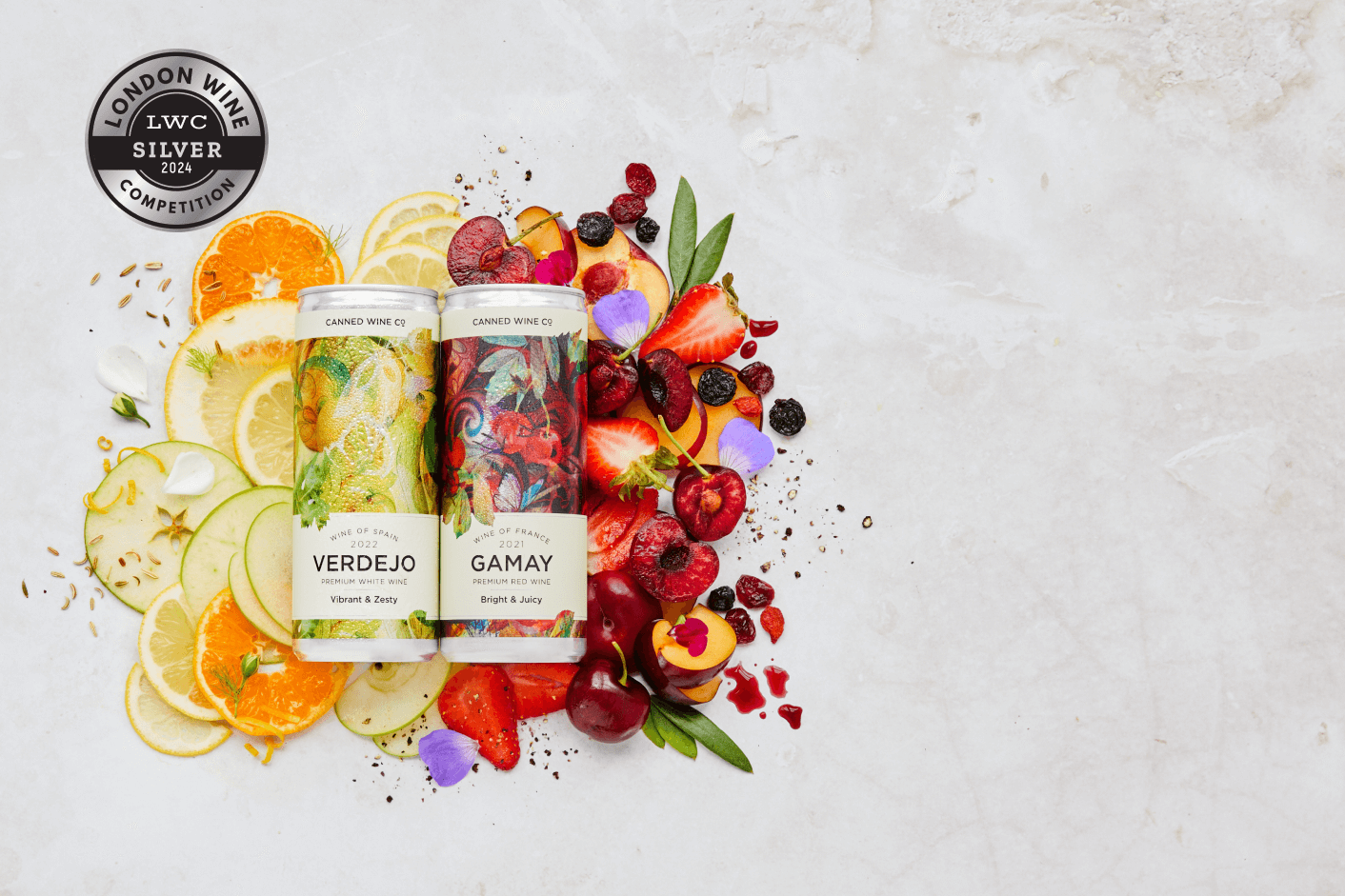Have you ever wondered what tannin means? How about corked, jammy or maceration? The wine world is full of terminology that the average person can only hope to understand. Sometimes it feels purposefully complicated, like you’re not meant to know what it means, but we want to debunk that wine jargon.
We’ve compiled a few of the most common terms and simplified them right down. They’re separated into three categories: tasting wine, wine-making processes and geography, so you know when they’re appropriate to use.
Slip these into a conversation about our award-winning canned wine and you’ll sound like a master of wine in no time!
Tasting wine
- Balance – Balance is how the levels of acidity, sweetness, tannin, alcohol and body interact. A wine is said to be balanced when these qualities are all in harmony and none of them overpower each other. However as with all things to do with taste, balance is more of a perceived quality, how the individual tastes the wine, than an exact science. Learn more about how to identify these five qualities here.
- Beefy – Even amongst all the flavours and smells people say they can detect in wine, beefy sounds weird. But it’s generally used to describe big-flavoured wines that have lots texture in the mouth and savoury notes rather than fruit or sweetness. Other terms that might be used in the same way are meaty and brawny.
- Corked – Perhaps surprisingly, this doesn’t mean when you get a bit of cork in your wine. A corked wine is flawed and will smell like wet dog or mouldy cardboard.
- Finish – The sensation of flavours that you experience long after you’ve swallowed your wine. Some wines have a short finish meaning you don’t taste much after the actual wine leaves your mouth, but others have a long finish, with flavours that linger on your palate and even develop into new flavours. Our Grenache Rose canned wine is the perfect example, its long finish leaves you with a delicious taste of juicy orange citrus and fresh strawberries.
- Herbaceous – Flavours or aromas that remind you of greenery and fresh herbs. It can suggest fruit grown in a cool climate. It was these beautifully-crisp flavours that we hunted for in our Gruner Veltliner and inspired its design. Our award-winning canned wine illustrates Austria’s star grape variety in all its glory: dry and herbaceous with flavours of green apple, peaches and white pepper finish. Why not try our Gruner Veltliner for yourself and see if you can identify its herbaceous qualities?
- Jammy – Usually used to describe full-bodied wines with flavours of overripe fruit. They taste and smell of jam, sweet and sticky with possible hints of raisins or prunes.
- Minerality – A unique quality denoting flavours and smells of rock or cement, usually found in wines grown in rocky, mineral-rich soils. The smell can be similar to the scent of the pavement after it’s rained. The terms stoney or stone notes might be used to mean the same thing.
- Mouthfeel – The textural sensation of wine when it’s in your mouth.
- Plush – Wines that feel polished, luxurious and rich when tasted. A good quality to look out for!
- Quaffer – Easy-to-drink wine. Probably inexpensive with simple flavours, but enjoyable and without fault.
- Tannin – This is the wine quality that can dry out your mouth and make your tongue feel like sandpaper. It’s best compared to the sensation of eating a grape skin or sucking on a teabag. Tannin gives wine structure and complexity. Read more about it here.
Winemaking processes
- Fining – Clarifying wine by adding egg whites, clay or gelatine (amongst other things) to capture any solids before filtration. It’s used to remove any particles which might make the wine cloudy or unclear.
- Lees – Sediment left over after fermentation created from seeds, stems, pulp, other grape matter and yeast cells. A wine may be ‘left on its lees’ or sur lie in French to give it a richer body and creaminess.
- Maceration – The process of fermenting grape juices and skins together, which imparts colour, tannins and aromas onto the wine.
- Vintage – The specific year the grapes were harvested in.
Geography
- Provenance – The source, life cycle and storage of a wine. Essentially it’s life story. Where did the wine come from? Has it been stored correctly and looked after? Wines of super provenance can go for big bucks at auction.
- Terroir – Pronounced ‘tear-woah’ (‘tear’ as in to rip something, not as in crying because all your wine is gone). From the French describing how a region’s unique combination of soil, climate, winemaking practices and other factors can influence the character of a wine.
Written by Niamh Harkett






